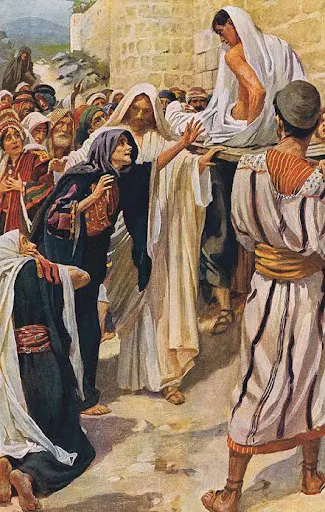Apostle Paul in his letter to 1Corinthians 15:5,6 writes, "He(Jesus) appeared to Cephas, and then to the Twelve. After that, he appeared to more than five hundred of the brothers and sisters at the same time, most of whom are still living, though some have fallen asleep" (1Corinthians 15:5-6, NIV).
Even after this great testimonial of Paul saying that though some died, he saw some people still living in his time while he was writing a letter to Corinthians in AD 55-60. So, there are saints moving around in AD 55-60. Although this is factual to Paul, to some it might be a fiction. This can only be resolved by other factual evidence from a non-biblical narrative.
Eusebius of Caesare, an early Church Historian mentions about a person by name Quadratus, an apologist of his time. Quadratus lived in the time of Emperor Hadrian who reigned Rome in the years AD 117-138. Writing a defence of Christianity about the miracles of Jesus as facts, "Our Saviour's works were always there to see, for they were true - the people who had been cured and those raised from the dead, who had not merely been seen at the moment when they were cured or raised, but were always there to see, not only when he Saviour was among us, but for a long time after His departure; in fact some of them survived right up to my own time", (Eusebius, Church History, Book 4.3). In the same way Aristides, a loyal and devoted Christian also wrote a "Defence of the Faith", addressed to emperor Hadrian.
G.A.Williamson who translated Eusebius Church History writes a footnote saying that, "they [the Nain young man and others who were raised to life at the time of Jesus Crucifixion (Mt 27:52&53)] might well have survived till nineties(age), when Quadratus was presumably a young man". Church Historians place this incident of Quadratus giving his apology to Hadrian in the year AD 124-125.
Case Study : The first miracle of Jesus Christ of raising a dead man to life was recorded in the Gospel of Luke. Luke writes that, "Jesus went to a town called Nain,... As he approached the town gate, a dead person was being carried out—the only son of his mother, and she was a widow. ...the Lord saw her, his heart went out to her and he said, “Don’t cry". Then he went up and touched the bier they were carrying him on, and the bearers stood still. He said, “Young man, I say to you, get up!” The dead man sat up and began to talk, and Jesus gave him back to his mother." (Lk.7:11-15, NIV).
Observe the word what Jesus calls the dead person, "young man", which in Greek was written as "(νεανίσκος) neanískos". Greek dictionary tells that men under fourty are called as neanískos. Let's assume that the Nain boy was around 20 years of age while Jesus was a 32 year old young man (in the year AD 32). And now, let's assume that by the time Quadratus handedover his apology to Hadrian at Greece was about 50 years of age (AD124-125). If Nain young boy had lived another 50 years after he was been risen from the dead by Jesus Christ, which makes him a 70 year old man, then he would have lived till AD 82. The math goes like 32 + 50 = 82. Now as said Quadratus was 50 years of age at AD 124. If we subtract 124 - 50 = 74. Hence AD 74 was when the apologist Quadratus was born. By the time Nain young man died in the year AD 82, Quadratus would be a 8 year old boy. This makes an overlap of 8 years for both Nain young man and Quadratus lives, which gives enough information to know about this man of Nain his life and the miracle that happened and his post miraculous life after being risen from the dead. This would be the reason why Quadratus said, "...in fact some of them survived right up to my own time".
Whether my case study would be correct or incorrect, but the fact that the confessions written in history are true. Why? Because what if emperor Hadrian was interested as like Herod Antipas was fascinated by the life of John the Baptist, and wanted to bring before him the family members of the Nain young man. If Quadratus was wrong then he would have to face a severe punishment, isn't it.
So, to conclude, Jesus said, “I am the resurrection and the life. The one who believes in me will live, even though they die" (John 11:25, NIV). "Do not be afraid. I am the First and the Last. I am the Living One; I was dead, and now look, I am alive for ever and ever! And I hold the keys of death and Hades." (Revelation 1:17&18, NIV).
So, believe in the Holy Scriptures, because they are History.

Great deduction brother...
ReplyDeleteThank you for reading. Thank you for encouraging by your comments brother.
DeleteNice work anna. It takes a lot to gatherings everything and do a case study. Great job.
ReplyDeleteThank you for the appreciation Bro/Sis. Rather than receiving comments under Anonymous, it would be better if you can type your name.
ReplyDelete